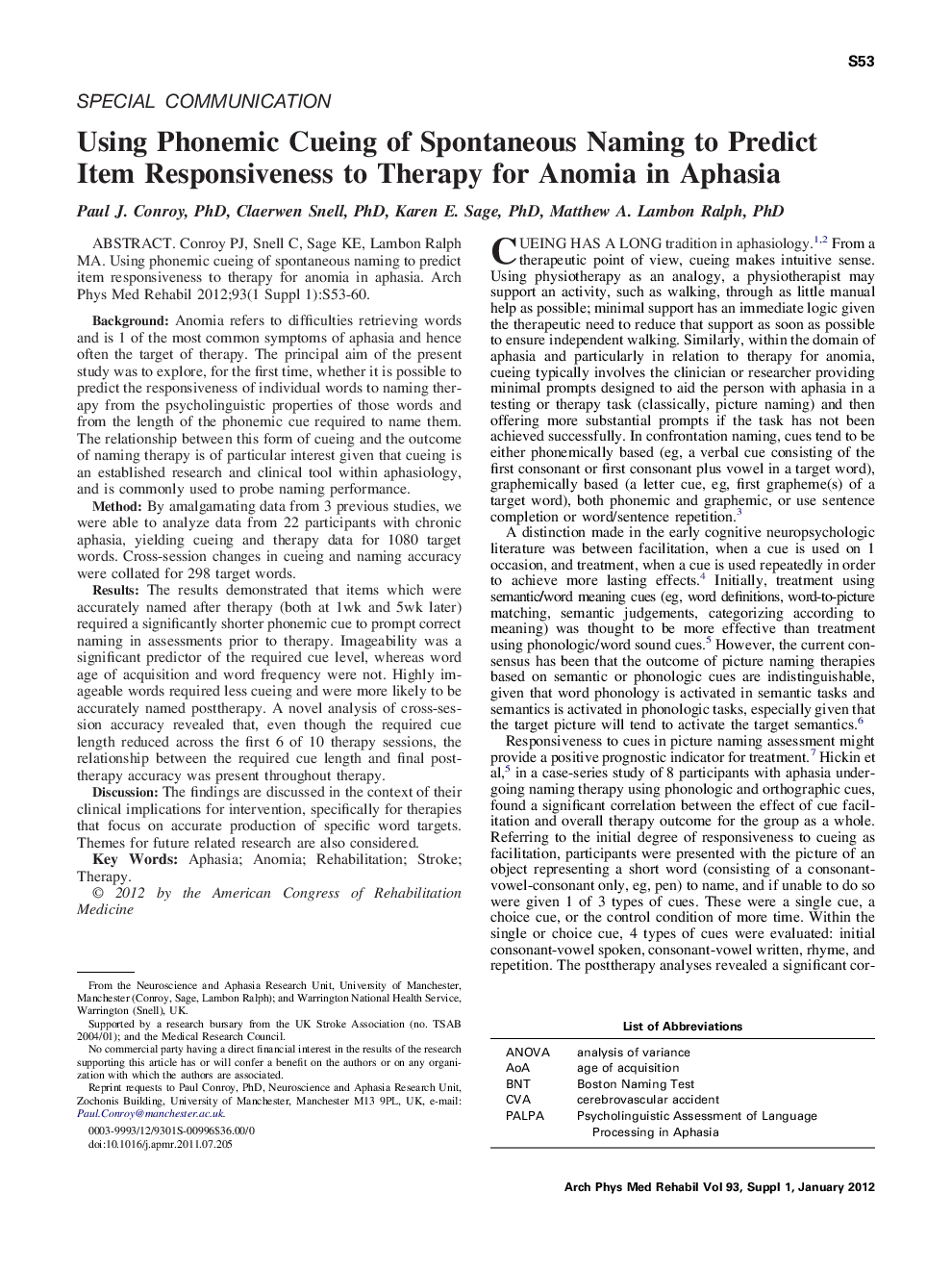| کد مقاله | کد نشریه | سال انتشار | مقاله انگلیسی | نسخه تمام متن |
|---|---|---|---|---|
| 3449760 | 1595731 | 2012 | 8 صفحه PDF | دانلود رایگان |

Conroy PJ, Snell C, Sage KE, Lambon Ralph MA. Using phonemic cueing of spontaneous naming to predict item responsiveness to therapy for anomia in aphasia.BackgroundAnomia refers to difficulties retrieving words and is 1 of the most common symptoms of aphasia and hence often the target of therapy. The principal aim of the present study was to explore, for the first time, whether it is possible to predict the responsiveness of individual words to naming therapy from the psycholinguistic properties of those words and from the length of the phonemic cue required to name them. The relationship between this form of cueing and the outcome of naming therapy is of particular interest given that cueing is an established research and clinical tool within aphasiology, and is commonly used to probe naming performance.MethodBy amalgamating data from 3 previous studies, we were able to analyze data from 22 participants with chronic aphasia, yielding cueing and therapy data for 1080 target words. Cross-session changes in cueing and naming accuracy were collated for 298 target words.ResultsThe results demonstrated that items which were accurately named after therapy (both at 1wk and 5wk later) required a significantly shorter phonemic cue to prompt correct naming in assessments prior to therapy. Imageability was a significant predictor of the required cue level, whereas word age of acquisition and word frequency were not. Highly imageable words required less cueing and were more likely to be accurately named posttherapy. A novel analysis of cross-session accuracy revealed that, even though the required cue length reduced across the first 6 of 10 therapy sessions, the relationship between the required cue length and final posttherapy accuracy was present throughout therapy.DiscussionThe findings are discussed in the context of their clinical implications for intervention, specifically for therapies that focus on accurate production of specific word targets. Themes for future related research are also considered.
Journal: Archives of Physical Medicine and Rehabilitation - Volume 93, Issue 1, Supplement, January 2012, Pages S53–S60